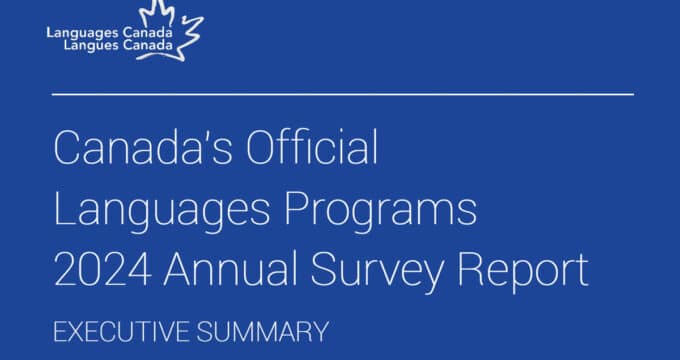Financial impact of new immigration settings in Canada already being measured in the billions
- New policy settings introduced by the Canadian government have led to declining foreign enrolment in Canada this year
- Canada’s public universities and colleges are chronically underfunded, and many of them depend on international student tuition for their current operations
- Analysts predict massive programme closures and job losses as a result of declining international student numbers
- In addition to forecasts of billions-of-dollar losses over the next two years, industry leaders warn the Canadian education brand is suffering in overseas student markets
New immigration policies enacted by the Canadian government in 2023 and 2024 are projected to remove billions from the revenue base of Canada’s post-secondary system over the next two years.
Policy background
For those unfamiliar with the many changes that Canada’s immigration minister has imposed in the past year, here's a summary:
- A savings requirement of CDN$20,000+ for study permit eligibility;
- Under a federally mandated cap on foreign enrolments, a 35% reduction in new study permits for 2024 and a further 10% reduction for 2025, with some institutions especially affected because of a differentiated allotment of the overall number of study permits;
- The inclusion of master’s and doctoral study levels in the 2025 cap (until September 2024, the cap had been only for the undergraduate level);
- The removal of the right of partners of undergraduate students and some master’s students to receive an open work visa;
- The elimination of eligibility for the Post-Graduation Work Programme (PGWP) for college students applying after 1 November 2024 unless they are graduating from designated fields of study;
- The elimination of post-study work eligibility for students enrolled in college programmes delivered via private-public partnerships.
Ontario will be hit hard
Steve Orsini, president and CEO of the Council of Ontario Universities (COU), has announced that based on COU members’ projections, Ontario universities will lose CDN$300 million in 2024/25 compared with 2023, and CDN$600 million in 2025/26, assuming current trends hold. As he says, “That’s nearly a $1-billion financial impact in the first two years alone.”
Ontario enrols more international students than any other province in both colleges and universities; just over four in ten foreign students in Canada study in Ontario. In addition, the province’s funding of post-secondary institutions is the lowest in all of Canada, making those institutions heavily reliant on tuition fees – especially those paid by international students. The Ontario Federation of Faculty Associations (OCUFA) reports:
“International students in Ontario pay the highest – and domestic students pay the fourth highest – tuition in Canada because Ontario’s funding is dead last in the country.”
OCUFA concludes:
“The system is undoubtedly broken, and these student caps only cause more problems. The only way out is for the province to properly fund universities and for the federal government to implement immigration policies that attract the world’s best talent, including international students to study in Ontario’s world-class universities.”
As for Ontario colleges, they are funded at only 44% of the Canadian national average and are more reliant than universities on international tuition. Colleges and Institutes Canada (CICan) president Pari Johnston says that the new policies “will cause significant harm in the college sector and to local businesses that rely on the schools to supply graduates to the labour force.”
News broke today that three Ontario colleges have already lost thousands of international students due to policy-related study permit delays or the policies themselves. Some of those students have decided not to come to Canada, and others have deferred their study plans.
Overall, industry analyst Alex Usher predicts:
“The carnage will be immediate and catastrophic in Ontario colleges, immediate and severe in colleges elsewhere, and slow-moving but severe in universities. With, in total, probably something like 20,000 job losses. It’s not going to be pretty. And it’s deeply unnecessary: true, something had to be done...It’s just not clear this was that something.”
He warns:
“Think we’re going to get through this without program closures? Think again. We’re talking about hundreds of program closures and all those high-cost programs in health and trades are 100% on the table, because the provincial government simply does not fund these programs at an adequate level. They’ve been cross subsidized for years by international students. It’s going to be a program apocalypse, one that provincial governments are completely unprepared to handle because international student fees have allowed them to stay in denial about the extent of their own underfunding over the past decade.”
A better way
The Council of Ontario Universities’ Mr Orsini told the Globe and Mail: “The more we signal international students are not welcome, the more those most mobile, most talented students may turn away from applying to Canada.”
Mr Orsini said there is a much better way, which would be to target only unscrupulous post-secondary institutions, which are a very small minority of all institutions in Canada:
“While we recognize the federal government had to address the bad actors that recklessly increased international student enrolment without the necessary supports, this has resulted in significant collateral damage to universities, which will have untold implications for years to come. It is critical that measures to reduce overall international student numbers target institutions that have seen irresponsible and unsustainable growth in recent years.”
Universities Canada calls on the government to act
Gabriel Miller, president of Universities Canada, said the inclusion of master’s and PhD students in the cap is yet another blow to Canada’s brand:
“Our international reputation has already gotten very beaten up over the past six months and the decision to tighten the screws on the cap and to make recruiting graduate students more difficult will put another dent in our brand. [The decline in new international students] will mean bigger deficits at more institutions right across the country. It’s still within the power of federal and provincial governments to prevent those deficits from turning into cuts that hurt students and our economy.”
He continued:
“We’ve got to make sure one terrible year in international student recruitment is not allowed to turn into three, five, or 10 years. And we need to start seeing real plans to fix the funding gap that is hurting universities in Ontario and across the country.”
Canada’s Atlantic universities in trouble
The Association of Atlantic Universities (AAU) hired Gardner Pinfold Consultants to analyse the situation for universities in the region, with a resulting report entitled The Economic Impacts of Canada's International Student Cap in Atlantic Canada for 2024/25.
The report relies on the following analytical model that compares:
- The economic contribution of international students using the 2023/24 enrolment figures and 2024/25 tuition rates, assuming no cap had been imposed.
- The economic contribution of international students using the 2024/25 actual enrolments and 2024/25 tuition rates.
The analysis found a decline of nearly 3,000 international students across the Atlantic region (-11.4%) because of the cap, and declines of:
- CDN$163 million in spending (direct output)
- CDN$165 million in provincial GDP
- CDN$94 million in provincial income
- CDN$39 million in tax revenues for provincial governments
- 2,231 full‐time equivalent jobs
AAU president Peter Halpin said the cap has had a “devastating effect on many of the 16 universities across the region.” Universities in Atlantic Canada are heavily reliant on international student tuition, with 3 in every 10 university students an international student.
The government position
Immigration, Refugees and Citizenship Canada (IRCC) defended the cap and related policies in a statement:
“It would be unfair to blame students for the housing crisis, but it would be equally unfair to welcome an unlimited volume of international students without the proper supports – whether it’s housing, healthcare, or a proper education environment.”
The words likely ring hollow for Ontario’s Mohawk College, which received almost 40% fewer foreign students this fall than last fall, and which now boasts a 300-bed residence for students at its Hamilton campus. The residence was built to house incoming international students, but Katie Burrows, Mohawk’s vice-president for international students, says there are only 60 students living there.
The new policies will have an impact far beyond the college and university sector. As Universities Canada’s Mr Miller says: "It's really costing Canada the people we are going to need to be doctors, to be engineers, to be entrepreneurs.”
He has said: “There’s every possibility that [the impact of the cap is] going to be even worse than we fear. But it’s important to note that we’re already in territory that no one anticipated and that needs to set off a big alarm bell in Ottawa that we need to start turning this around right away.”
For additional background, please see:
Most Recent
-
The surging demand for skills training in a rapidly changing global economy Read More
-
US issues corrected student visa data showing growth for 2024 while current trends point to an enrolment decline for 2025/26 Read More
-
Survey finds US institutions expanding agency engagement and focusing on new student markets Read More


















